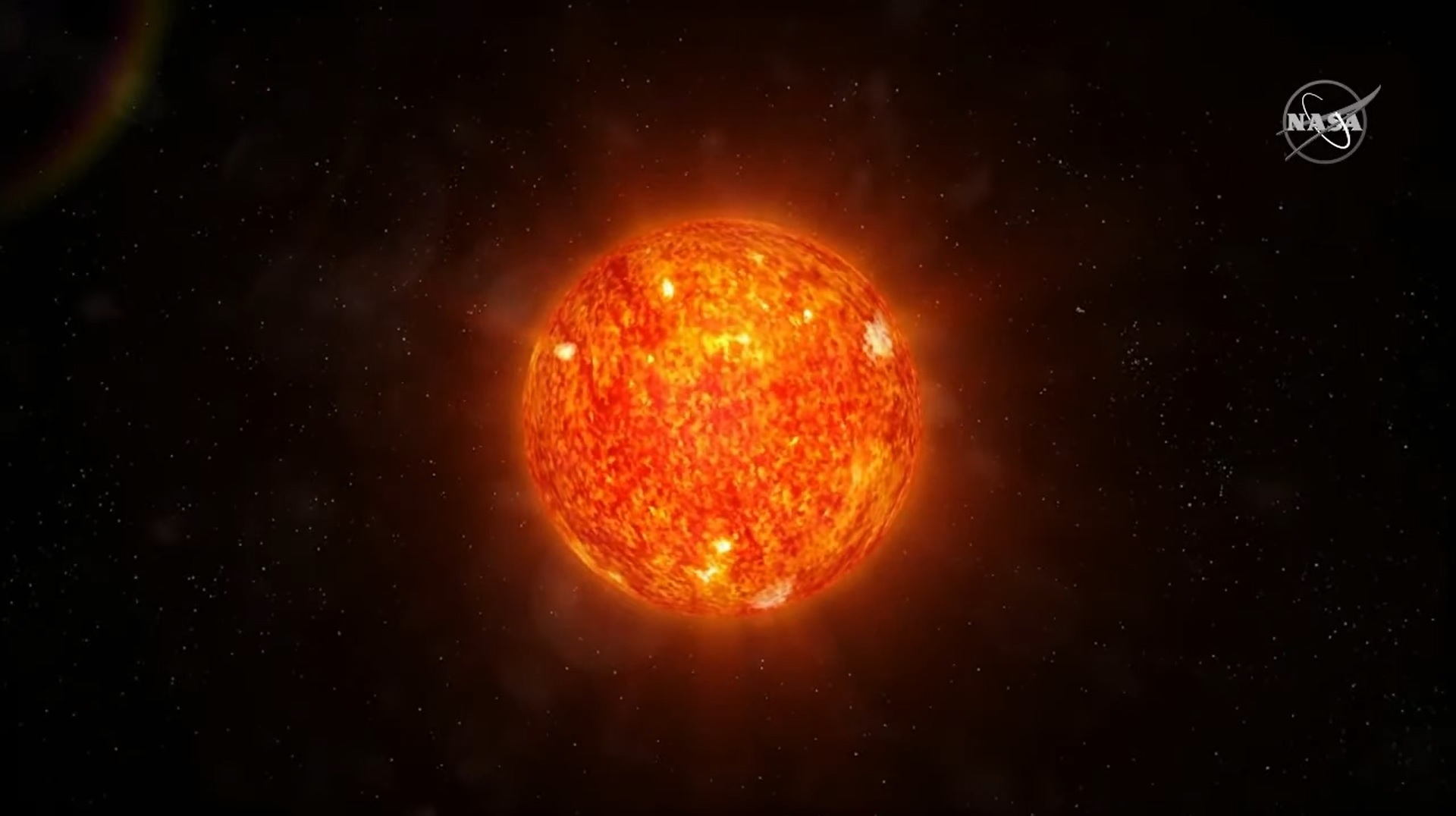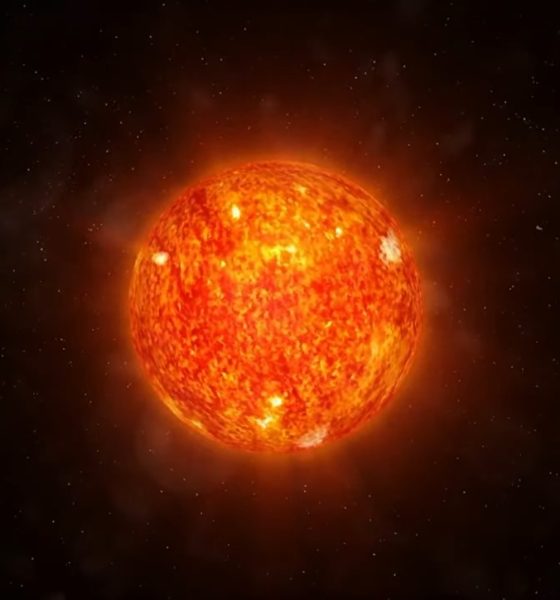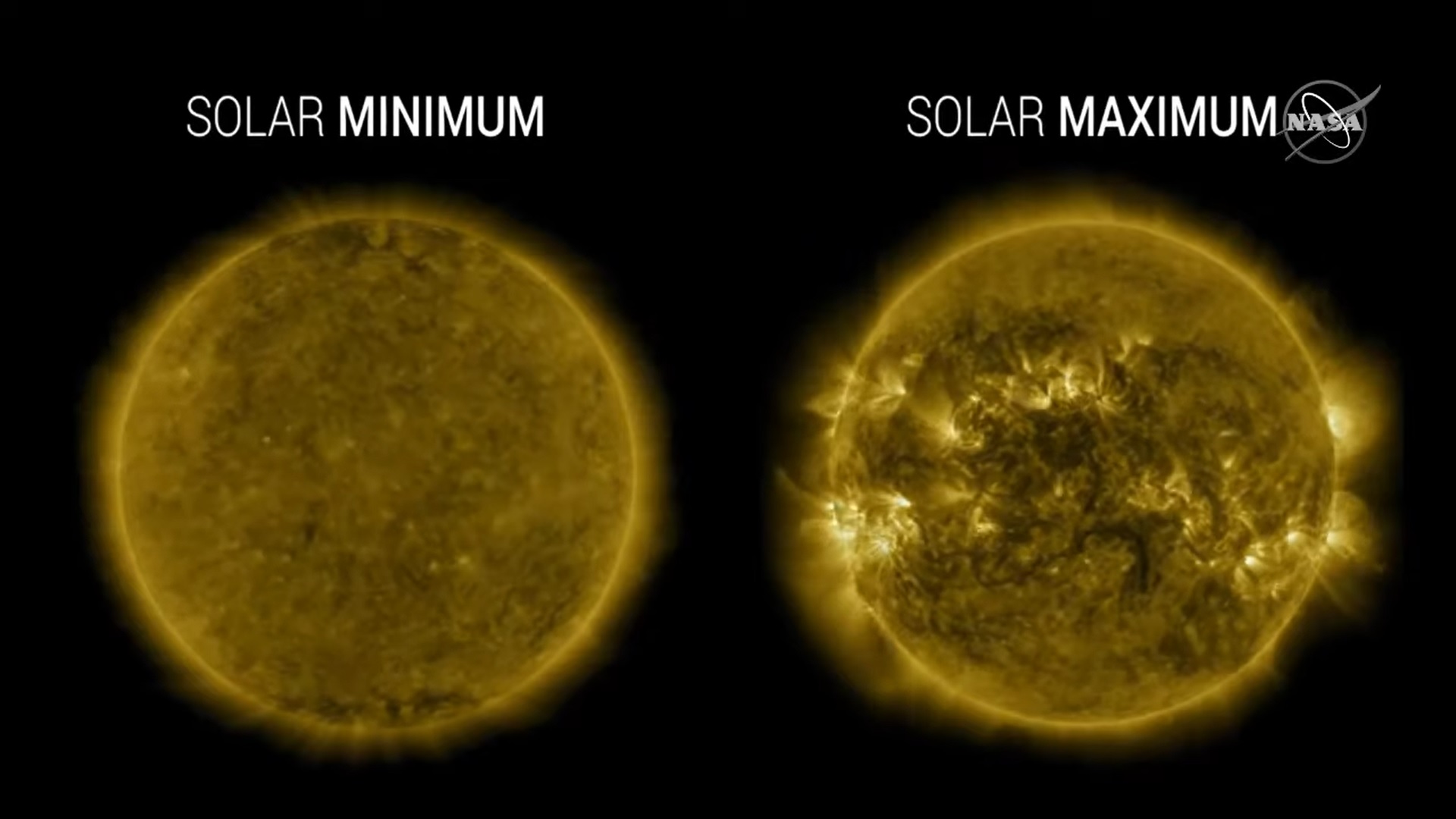

News
NASA confirms the Sun’s new solar cycle; Moon and Mars missions will have to adapt
NASA just announced that our Sun began a new solar cycle this year – its 25th to be exact – after reaching a solar minimum in December 2019. Solar weather activity is now expected to increase for the next five years until reaching a maximum in July 2025. With several space missions planned during that time frame for both the Moon and Mars, the Artemis program, in particular, involving astronauts on board, extra preparation and consideration will have to be made to weigh the impact of the increasing radiation events.
“Space weather predictions are…critical for supporting Artemis program spacecraft and astronauts,” NASA’s announcement detailed. “Surveying this space environment is the first step to understanding and mitigating astronaut exposure to space radiation.”
Solar activity is tracked by agencies around the world by counting the number of sunspots (black spots) that appear on the Sun. Each one is an indicator of some type of high-energy activity such as solar flares or coronal mass ejections, and their appearance means a large amount of Sun material has been ejected into space. This material can cause disruptions on Earth, in orbit, or on anything in the deep space region nearby our star. Satellites in particular have to cope with solar interruptions frequently, although algorithms and engineering tend to mitigate much notice from a consumer standpoint.

While the Artemis mission will certainly have to take on the new challenge of a Sun that’s becoming more and more active as time goes on, solar cycles aren’t something new to NASA’s human spaceflight program.
“As we emerge from solar minimum and approach Cycle 25’s maximum, it is important to remember solar activity never stops; it changes form as the pendulum swings,” explained Lika Guhathakurta, solar scientist at the Heliophysics Division at NASA Headquarters in Washington, in the solar cycle announcement. “There is no bad weather, just bad preparation… Space weather is what it is – our job is to prepare,” added Jake Bleacher, chief scientist for NASA’s Human Exploration and Operations Mission Directorate at the agency’s Headquarters.
When astronauts are orbiting the Earth, our planet’s magnetic field protects them from being directly hit by the majority of solar ejections; however, once outside that protective bubble and on their way to another deep space or lunar destination, things can be very dangerous. Radiation issues are often discussed when it comes to human space exploration, but scientists don’t seem to be short of ideas on how to handle it.
☀️ Hearing a lot about our Sun today?
Scientists just announced it’s in a new cycle — meaning that we expect to see solar activity start to ramp up over the next several years.
Find out how these cycles are tracked and how they can affect life on Earth: https://t.co/zerIWT0IWJ pic.twitter.com/e4FD6HD1hF
— NASA (@NASA) September 15, 2020
SpaceX CEO Elon Musk, for example, has proposed passengers en route to Mars using water as shielding. During a solar flare event, all on board would move to a part of the Starship where the liquid was being stored and essentially use it like a basement during bad weather. Given that SpaceX plans to deal with radiation in the longer term via Mars colonization, there may be plenty of other developments coming from the rocket launch (and landing) company in the near future.
Aside from the scientists watching and studying the Sun’s solar activity, the European Space Agency currently has a space probe in orbit around our star. The spacecraft has been sending back the closest pictures of the Sun we’ve ever seen, and a few new features have been observed such as ‘campfires.‘ The probe’s overall mission involves studying and understanding the Sun’s solar cycles and hopefully make space weather prediction akin to the kind of meteorology we have on Earth.
“Just because it’s a below-average solar cycle, doesn’t mean there is no risk of extreme space weather,” Doug Biesecker, panel co-chair and solar physicist at NOAA’s Space Weather Prediction Center (SWPC) in Boulder, Colorado, commented. “The Sun’s impact on our daily lives is real and is there. SWPC is staffed 24/7, 365 days a year because the Sun is always capable of giving us something to forecast.”
NASA held a live-streamed conference discussing the solar cycle announcement which you can watch below:

Elon Musk
SpaceX issues statement on Starship V3 Booster 18 anomaly
The incident unfolded during gas-system pressure testing at the company’s Massey facility in Starbase, Texas.

SpaceX has issued an initial statement about Starship Booster 18’s anomaly early Friday. The incident unfolded during gas-system pressure testing at the company’s Massey facility in Starbase, Texas.
SpaceX’s initial comment
As per SpaceX in a post on its official account on social media platform X, Booster 18 was undergoing gas system pressure tests when the anomaly happened. Despite the nature of the incident, the company emphasized that no propellant was loaded, no engines were installed, and personnel were kept at a safe distance from the booster, resulting in zero injuries.
“Booster 18 suffered an anomaly during gas system pressure testing that we were conducting in advance of structural proof testing. No propellant was on the vehicle, and engines were not yet installed. The teams need time to investigate before we are confident of the cause. No one was injured as we maintain a safe distance for personnel during this type of testing. The site remains clear and we are working plans to safely reenter the site,” SpaceX wrote in its post on X.
Incident and aftermath
Livestream footage from LabPadre showed Booster 18’s lower half crumpling around the liquid oxygen tank area at approximately 4:04 a.m. CT. Subsequent images posted by on-site observers revealed extensive deformation across the booster’s lower structure. Needless to say, spaceflight observers have noted that Booster 18 would likely be a complete loss due to its anomaly.
Booster 18 had rolled out only a day earlier and was one of the first vehicles in the Starship V3 program. The V3 series incorporates structural reinforcements and reliability upgrades intended to prepare Starship for rapid-reuse testing and eventual tower-catch operations. Elon Musk has been optimistic about Starship V3, previously noting on X that the spacecraft might be able to complete initial missions to Mars.
Investor's Corner
Tesla analyst maintains $500 PT, says FSD drives better than humans now
The team also met with Tesla leaders for more than an hour to discuss autonomy, chip development, and upcoming deployment plans.

Tesla (NASDAQ:TSLA) received fresh support from Piper Sandler this week after analysts toured the Fremont Factory and tested the company’s latest Full Self-Driving software. The firm reaffirmed its $500 price target, stating that FSD V14 delivered a notably smooth robotaxi demonstration and may already perform at levels comparable to, if not better than, average human drivers.
The team also met with Tesla leaders for more than an hour to discuss autonomy, chip development, and upcoming deployment plans.
Analysts highlight autonomy progress
During more than 75 minutes of focused discussions, analysts reportedly focused on FSD v14’s updates. Piper Sandler’s team pointed to meaningful strides in perception, object handling, and overall ride smoothness during the robotaxi demo.
The visit also included discussions on updates to Tesla’s in-house chip initiatives, its Optimus program, and the growth of the company’s battery storage business. Analysts noted that Tesla continues refining cost structures and capital expenditure expectations, which are key elements in future margin recovery, as noted in a Yahoo Finance report.
Analyst Alexander Potter noted that “we think FSD is a truly impressive product that is (probably) already better at driving than the average American.” This conclusion was strengthened by what he described as a “flawless robotaxi ride to the hotel.”
Street targets diverge on TSLA
While Piper Sandler stands by its $500 target, it is not the highest estimate on the Street. Wedbush, for one, has a $600 per share price target for TSLA stock.
Other institutions have also weighed in on TSLA stock as of late. HSBC reiterated a Reduce rating with a $131 target, citing a gap between earnings fundamentals and the company’s market value. By contrast, TD Cowen maintained a Buy rating and a $509 target, pointing to strong autonomous driving demonstrations in Austin and the pace of software-driven improvements.
Stifel analysts also lifted their price target for Tesla to $508 per share over the company’s ongoing robotaxi and FSD programs.
Elon Musk
SpaceX Starship Version 3 booster crumples in early testing
Photos of the incident’s aftermath suggest that Booster 18 will likely be retired.

SpaceX’s new Starship first-stage booster, Booster 18, suffered major damage early Friday during its first round of testing in Starbase, Texas, just one day after rolling out of the factory.
Based on videos of the incident, the lower section of the rocket booster appeared to crumple during a pressurization test. Photos of the incident’s aftermath suggest that Booster 18 will likely be retired.
Booster test failure
SpaceX began structural and propellant-system verification tests on Booster 18 Thursday night at the Massey’s Test Site, only a few miles from Starbase’s production facilities, as noted in an Ars Technica report. At 4:04 a.m. CT on Friday, a livestream from LabPadre Space captured the booster’s lower half experiencing a sudden destructive event around its liquid oxygen tank section. Post-incident images, shared on X by @StarshipGazer, showed notable deformation in the booster’s lower structure.
Neither SpaceX nor Elon Musk had commented as of Friday morning, but the vehicle’s condition suggests it is likely a complete loss. This is quite unfortunate, as Booster 18 is already part of the Starship V3 program, which includes design fixes and upgrades intended to improve reliability. While SpaceX maintains a rather rapid Starship production line in Starbase, Booster 18 was generally expected to validate the improvements implemented in the V3 program.
Tight deadlines
SpaceX needs Starship boosters and upper stages to begin demonstrating rapid reuse, tower catches, and early operational Starlink missions over the next two years. More critically, NASA’s Artemis program depends on an on-orbit refueling test in the second half of 2026, a requirement for the vehicle’s expected crewed lunar landing around 2028.
While SpaceX is known for diagnosing failures quickly and returning to testing at unmatched speed, losing the newest-generation booster at the very start of its campaign highlights the immense challenge involved in scaling Starship into a reliable, high-cadence launch system. SpaceX, however, is known for getting things done quickly, so it would not be a surprise if the company manages to figure out what happened to Booster 18 in the near future.








